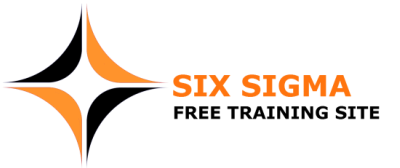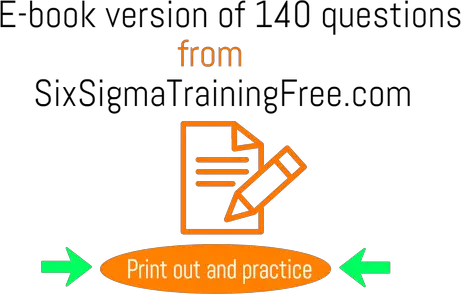Lean Six Sigma Training Test 6
(Answers can be found in the document below)
|
1) In the Six Sigma philosophy processes require inputs to produce outputs. Controlling the inputs, means controlling the outputs. This is normally expressed as:
a) y=f(-DPO)+x b) x=f(y) c) y=x(f) d) y=f(x) 2) Six Sigma teams go through all these team stages except: a) Leveraging b) Performing c) Storming d) Forming 3) A Black Belt tasked a junior Yellow Belt to calculate the Cp of an energy drink producing process with a tolerance of 5 (LSL) and 5.30 (USL) and SD 0.045. Data is normal and the process is stable. What is Cp a) 1.11 b) 0.3 c) 0.27 d) Need to know a sample mean to correctly calculate Cp |
|
4) When measuring the level of confounding in the context of experimental design the following characteristics describe Resolution IV except:
a) No main effects are confounded with two-factor interactions
b) No two-factor interactions are confounded with other two-factor interactions
c) No main effects are confounded with another main effect
d) Main effects are confounded with three-factor interactions
5) A Six Sigma team identified that the calculator frame production process produced sooner or faster or in greater quantity than is needed by the next operation. What type of muda did the Six Sigma identify :
a) Waiting
b) Processing
c) Motion
d) Overproduction
More practice tests:
- Lean Six Sigma Practice Test 1
- Lean Six Sigma Practice Test 2
- Lean Six Sigma Practice Test 3
- Lean Six Sigma Practice Test 4
- Lean Six Sigma Practice Test 5
- Lean Six Sigma Practice Test 7
- Lean Six Sigma Practice Test 8
- Lean Six Sigma Practice Test 9
- Lean Six Sigma Practice Test 10
- Lean Six Sigma Practice Test 11
- Lean Six Sigma Practice Test 12
| lean_six_sigma_practice_test_6.pdf | |
| File Size: | 6 kb |
| File Type: | |

